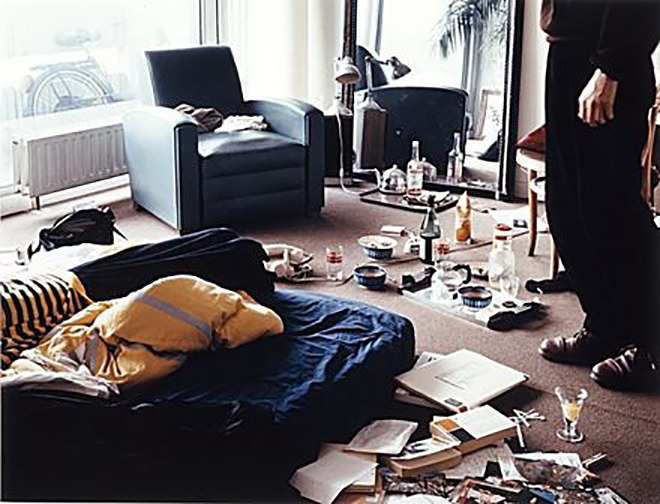Semester 2 2017 Studio 26
Housing Home, and Content(s)
Colby Vexler & Pricilla Heung

Studio Outline:
The home may perhaps be the best avenue to explore “contemporary life”. That is, the convergence of human(s) in space, facilitated by the ideas, content(s) and containers of humanism, humanities and the human body.
The house not only plays host to the physical human body, but all things that entertain the notion of humanism: thought, activity, ritual, signifying objects and spatial arrangements, this is where the house becomes home.
“Architecture houses. It is at home in - and provides a home for - philosophy [concepts and thought], aesthetics [cultural and material objects] and those discourses which are thought to describe it.”
Andrew Benjamin, Eisenman and the Housing of Tradition.
Philosophical, aesthetic and cultural reference will generate contextual frameworks that allow the home to find place, sustenance and the content(s). Here, architecture is considered as the in-between of thought and experience, where the house becomes a mediator between two parallel states, the conceptual and the material.
This investigation will argue for the critical agency of architecture, evoking discourse and dialogue between ideas, disciplines, technologies and representations.
This studio seeks to develop an architecture that may become a feedback, an agent of transference between ideas and objects, users and space; where architecture may be at home in - and provides a home for - contemporary life.
Studio Leaders
COLBY VEXLER is a graduate architect, teacher and writer. He graduated from a Master of Architectural Design, Monash University. After working in the offices of Sou Fujimoto and Junya Ishigami he has worked continuously in collaboration with various disciplinary practitioners. He has a long standing interest and engagement with cross disciplinary practice, spanning from literature, continental philosophy, 20th century and contemporary art, design projects and an amalgamations of blurred facets. Currently, Colby is a director of non for profit community platform Parallel _ For Thinking.
PRICILLA HEUNG is a practising graduate architect, teacher and research assistant. Her interests span from the techno-performative to the sociocultural, and their subsequent application to the discipline and mediums of architecture and design. Pricilla has worked on the production of a number of spatial installations, exhibitions and built outcomes. Currently, Pricilla is a director of non for profit community platform Parallel _ For Thinking.
Learning Outcomes:
Students will use a number of philosophical, aesthetic and cultural references to explore the spatial potentials between ideas, content(s) and users.This will be investigated through three key stages:
1. Finding home in (site): Students will develop a brief - A plan to frame and materialise a set of thoughts establishing relationships between their respective ideas; its users, content and space, a contextual framework that houses the design to come.
2. Finding home for (contents): Students will develop a taxonomy - A curated selection of material, content and objects that signify a particular value toward the thoughts, activities and rituals related to their idea - housed in the design to come.
3. Designing the home in and for: Here, students will activate modes of transference by designing a spatial mediation between the context it is housed in and the content(s), users, activities and rituals it is home to.
Projects will focus on the transference and meditation the home may play between the contextual and the material. It will reveal the unexpected, through the slippages, transitions and tension between ideas, content(s), user and space.
The house produced will act as an agent for mediating, critiquing and navigating the limitations, possibilities and transferences between the conceptual and material.
The project may become a critical survey, experiment or meditation between humanism, humanities and the human bodies that develop and extend the two conditions. This is where architecture may be at home in - and provides a home for - contemporary life.
Reading and Reference:
This studio will involve a number of workshops, readings and lectures from philosophers, writers and artists. This studio is based on a number of notions drawn from:
- Andrew Benjamin, Peter Eisenman and the Tradition of Housing
- Elizabeth Grosz, Architecture from the outside.
- John Rajchman, The Virtual House: A Description
Further, students will be exposed to a number of conceptual references including:
- Simulation, Jean Baudrillard
- Simulacra, Jean Baudrillard
- Paranoiac Critical Method, Salvador Dali
- Rhizome, Gilles Deleuze
- Deconstruction, Jacques Derrida
- Serialism, Sol Lewitt
Students will also be encouraged to explore a number of art-based, text-based and spatial based references.
ST1/26 Monday 6:15pm - 9:15pm, MSD Room 213
ST2/26 Thursday 6:15pm - 9:15pm, MSD Room 213